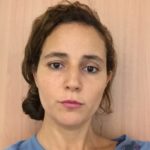Link to Pubmed [PMID] – 19434830
J Chem Inf Model 2009 Feb;49(2):280-94
The large volume of protein-ligand structures now available enables innovative and efficient protocols in computational FBDD (Fragment-Based Drug Design) to be proposed based on experimental data. In this work, we build a database of MED-Portions, where a MED-Portion is a new structural object encoding protein-fragment binding sites. MED-Portions are derived from mining all available protein-ligand structures with any library of small molecules. Combined with the MED-SuMo software to superpose similar protein interaction surfaces, pools of matching MED-Portions can be retrieved from any binding surface query. The rapidity of this technology allows its application to a diverse set of 107 protein binding sites. The selectivity of the protocol is shown by a qualitative correlation between the average hydrophobicity of the pools of MED-Portions and those of the binding sites. To generate hitlike molecules, MED-Portions are combined in 3D with the MED-Hybridise toolkit. Our MED-Portion/MED-SuMo/MED-Hybridise protocol is applied to two targets that represent important protein superfamilies in drug design: a protein kinase and a G-Protein Coupled Receptor (GPCR). We retrieved actives molecules of PubChem bioassays for the two targets. The results show the potential for finding relevant leads from any protein 3D structure since the occurrence of interfamily MED-Portions is 25% for protein kinase and almost 100% for the GPCR.

